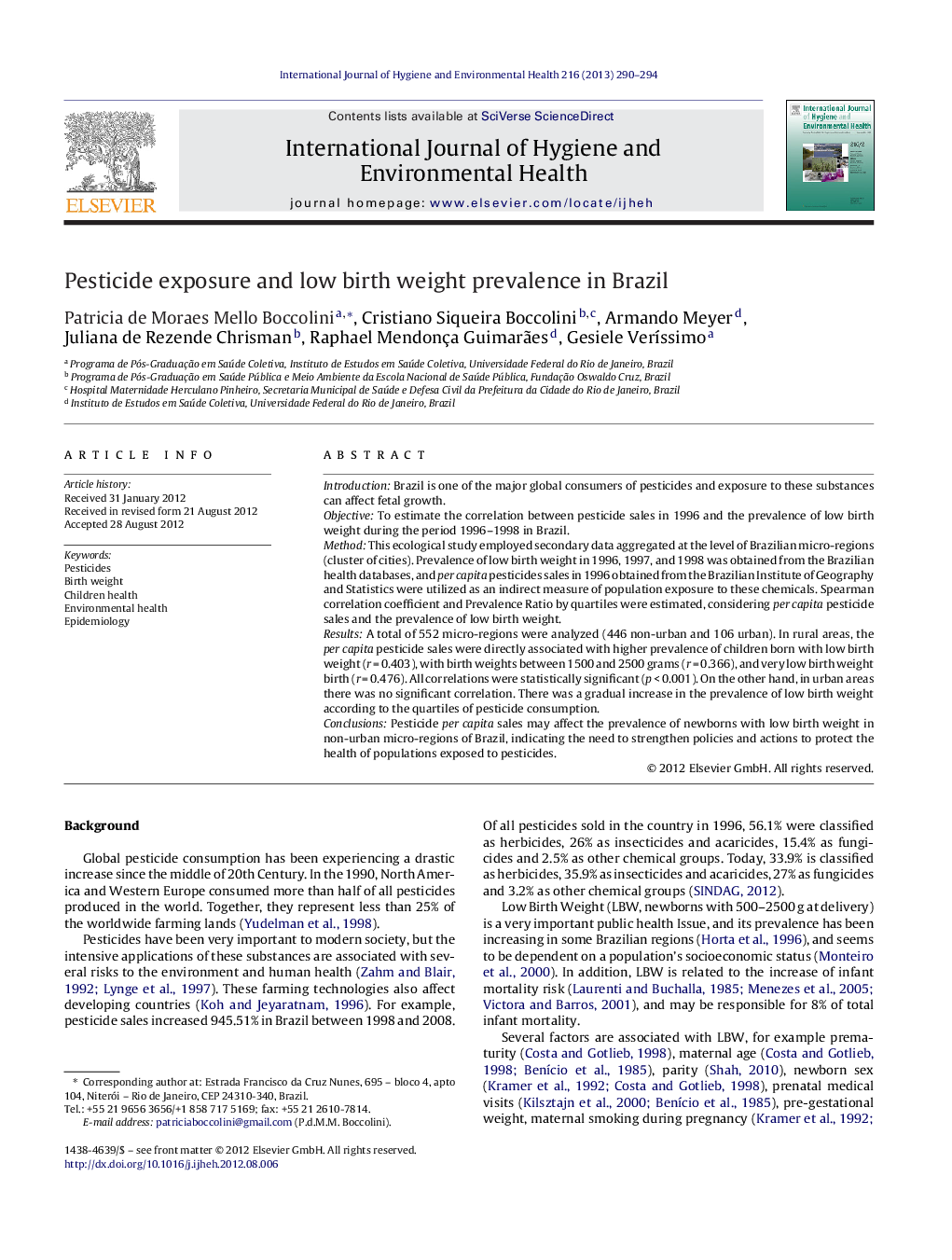| Article ID | Journal | Published Year | Pages | File Type |
|---|---|---|---|---|
| 2588836 | International Journal of Hygiene and Environmental Health | 2013 | 5 Pages |
IntroductionBrazil is one of the major global consumers of pesticides and exposure to these substances can affect fetal growth.ObjectiveTo estimate the correlation between pesticide sales in 1996 and the prevalence of low birth weight during the period 1996–1998 in Brazil.MethodThis ecological study employed secondary data aggregated at the level of Brazilian micro-regions (cluster of cities). Prevalence of low birth weight in 1996, 1997, and 1998 was obtained from the Brazilian health databases, and per capita pesticides sales in 1996 obtained from the Brazilian Institute of Geography and Statistics were utilized as an indirect measure of population exposure to these chemicals. Spearman correlation coefficient and Prevalence Ratio by quartiles were estimated, considering per capita pesticide sales and the prevalence of low birth weight.ResultsA total of 552 micro-regions were analyzed (446 non-urban and 106 urban). In rural areas, the per capita pesticide sales were directly associated with higher prevalence of children born with low birth weight (r = 0.403), with birth weights between 1500 and 2500 grams (r = 0.366), and very low birth weight birth (r = 0.476). All correlations were statistically significant (p < 0.001). On the other hand, in urban areas there was no significant correlation. There was a gradual increase in the prevalence of low birth weight according to the quartiles of pesticide consumption.ConclusionsPesticide per capita sales may affect the prevalence of newborns with low birth weight in non-urban micro-regions of Brazil, indicating the need to strengthen policies and actions to protect the health of populations exposed to pesticides.
